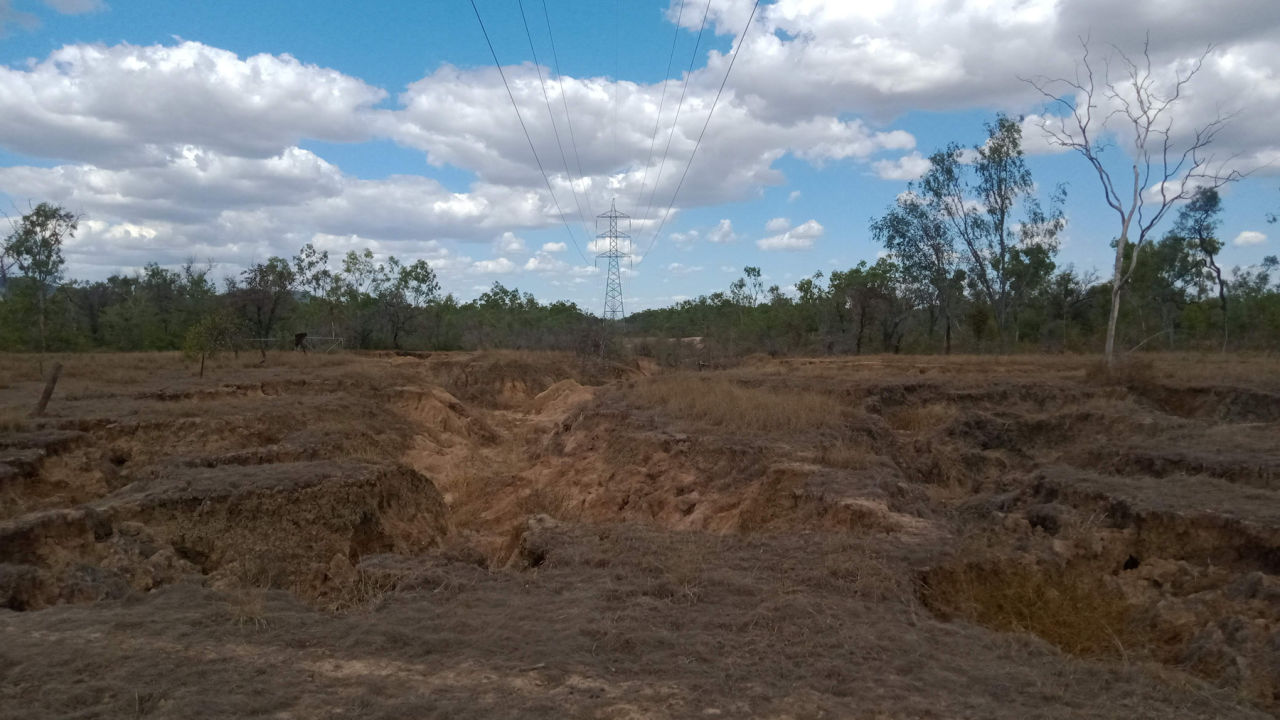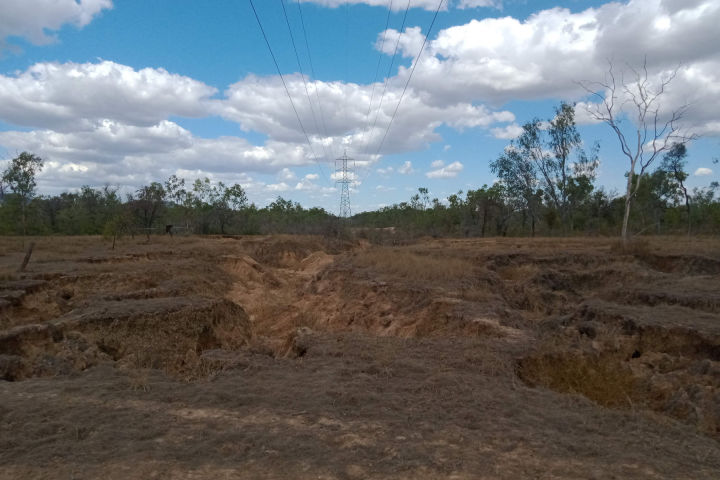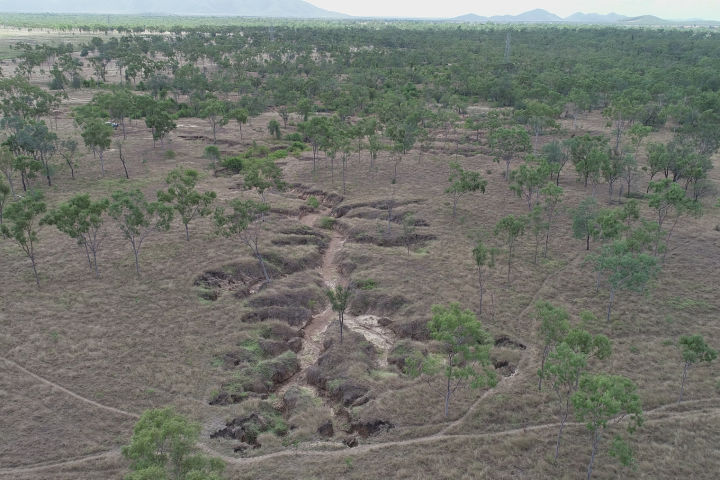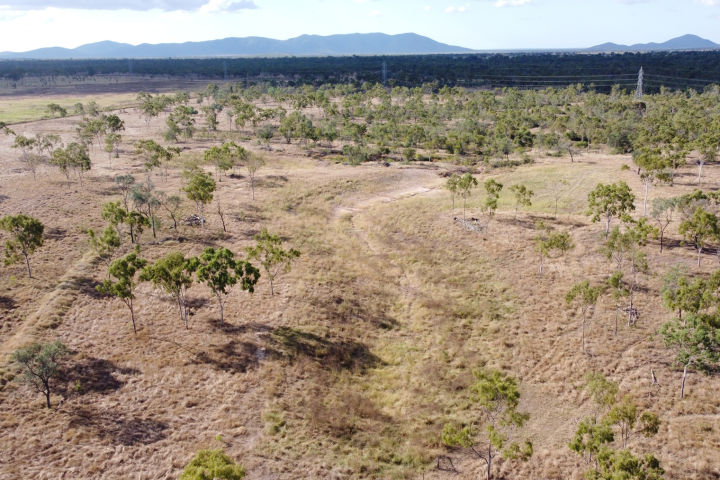Project News ·
Fixing a problem 50 years in the making
2,078 tonnes of sediment have been prevented from leaving Kirknie Station and entering the Reef.

After climate change, the biggest threat to the Reef is poor water quality caused by fine sediment and nutrients entering the Great Barrier Reef lagoon. In North Queensland, the Burdekin River is responsible for delivering the highest volume of fine sediment of any river.
Soil type and groundcover play a key role in how sediment moves through the landscape. The sodic and dispersive clay soils of the Burdekin catchment are susceptible to erosion, particularly when bare soils are exposed to heavy monsoonal rains during the wet season.
Cattle grazing property Kirknie Station sits on the banks of the Bogie and Burdekin rivers in Birriah Country. Despite progressive grazing management practices resulting in good groundcover and biodiversity across the property, a series of three large alluvial gullies that began eroding around 50 years ago were contributing to sediment losses into local waterways.

Cultural Heritage assessment prior to works. Credit: Greening Australia
Greening Australia partnered with the Rea family of Kirknie Station to remediate these gullies with funding through the partnership between the Australian Government’s Reef Trust and the Great Barrier Reef Foundation.
Prior to starting remediation works, four Birriah Traditional Owners along with their nominated technical advisor met with a Greening Australia representative and the landholder Mr Rea. Over next three days a cultural heritage survey was completed which found cultural artefacts at all sites. These artefacts were taken to the Birriah people's keeping place and returned to Country with a smoking ceremony after the remediation was complete.
Strong connections were made during the project. The Cultural Heritage assessment provided an opportunity for each party to meet on Country and connect on a personal level. An on-site field walk was held to showcase the project after works were completed. The Birriah Traditional Owners welcomed everyone to Country and discussed their connection to Country. The landholder shared some of the history of the property and the realities of managing a productive cattle business while maintaining healthy landscapes.

Central gully network before remediation. Credit: Greening Australia

Central gully network post works and wet season. Credit: Greening Australia
Greening Australia's project lead Ben Hanrahan said the remediation works are an example of how an experienced design and construct team can deliver cost effective sediment savings despite challenges.
"The distance between the sites and the poor soil condition meant the contractors, Rock-it Science, were working at three different sites and needed to adapt the designs during construction to suit the site requirements. Some sites have had maintenance works completed and will require future maintenance, but overall, the remediation has been a success," he said.
The project ran from 2020-2023 and the three gully networks were remediated using best practice techniques, including reshaping and battering the active gullies, installing rock chutes and bunds, and establishing vegetation to stabilise the works. The landholders at Kirknie Station have employed progressive grazing management practices to ensure the long-term success of the gully remediation works.
The remediation sites are monitored using sediment assessments, photo point monitoring, land condition assessments, in-gully vegetation assessments, and regular post-works maintenance surveys. As a result of this project, 2,078 tonnes of fine sediment have been stopped from reaching the Great Barrier Reef annually.

Southern gully network before remediation. Credit: Greening Australia

Southern gully network post works and wet season. Credit: Greening Australia
#Related

Project News ·
Community at the forefront of Reef water quality protection

Project News ·


